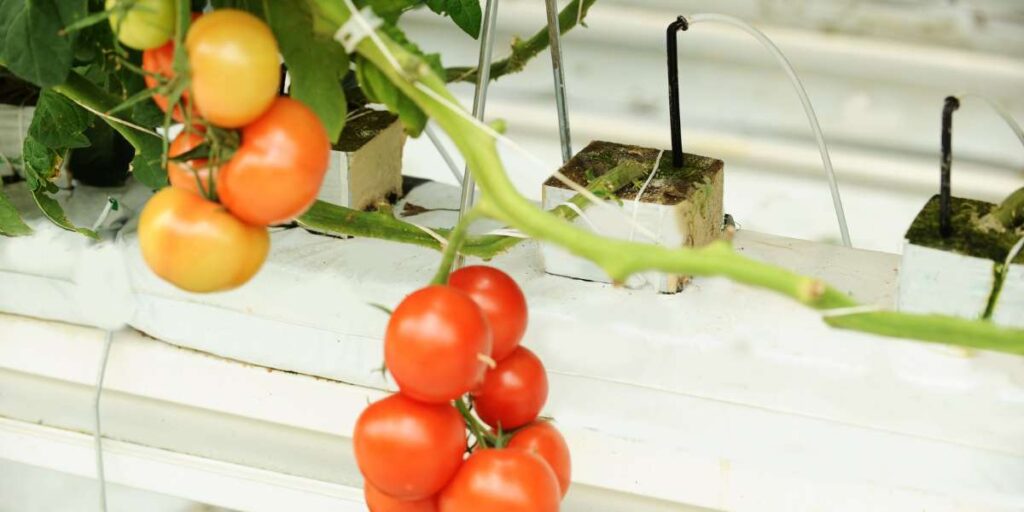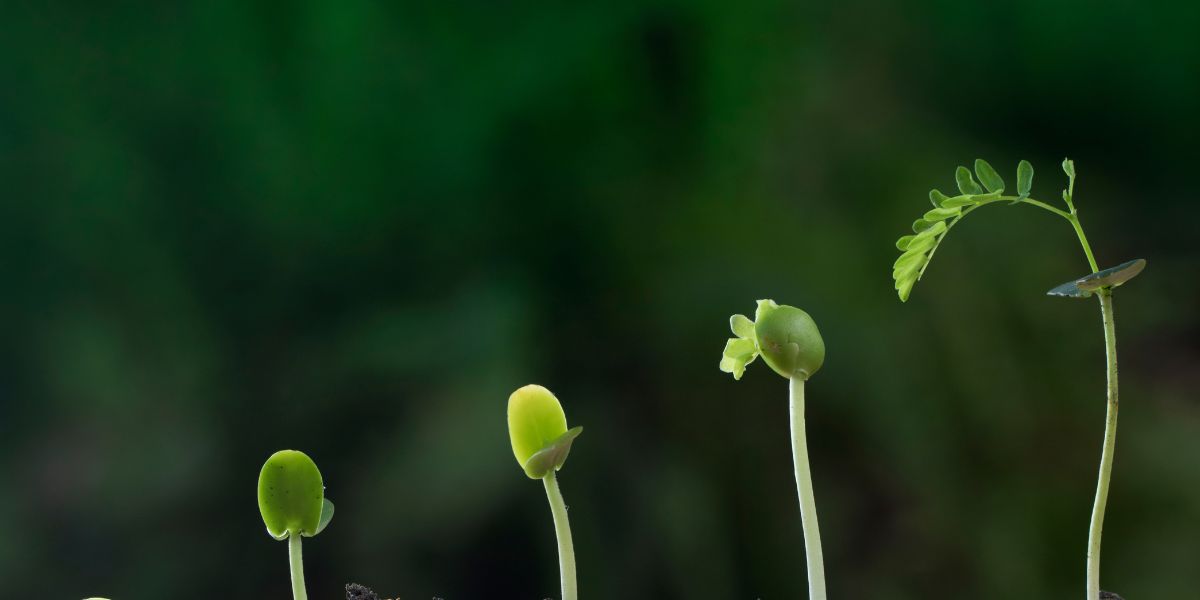Plant growth in hydroponic gardening follows a natural progression through distinct stages, each with its own specific needs and characteristics. Understanding these stages helps you provide the right care, adjust nutrients, and optimize lighting for your plants to thrive. Whether you’re growing leafy greens, herbs, or fruiting plants, here’s a starter guide to support plants through every step of their growth journey.
The Four Main Growth Stages
Plants progress through four primary stages of growth in hydroponic systems: germination, seedling, vegetative, and flowering/fruiting. Each stage requires different conditions to ensure healthy development.

1. Germination Stage
What Happens:
The germination stage begins when seeds are planted in a growing medium and exposed to the right combination of moisture, warmth, and oxygen. During this stage, the seed absorbs water, activates enzymes, and begins to sprout.
What Plants Need:
- Moisture: Keep the growing medium consistently damp but not waterlogged.
- Warmth: Maintain temperatures between 65–75°F (18–24°C).
- Low Light: Seeds don’t require intense light during germination, but indirect light helps once the sprouts appear.
Tips for Success:
- Use a humidity dome to retain moisture and warmth.
- Start seeds in a neutral medium like rock wool or coco coir.
- Avoid nutrient solutions at this stage; water alone is sufficient until roots develop.

2. Seedling Stage
What Happens:
As the sprout develops into a seedling, the first true leaves appear. Roots begin to grow, searching for water and nutrients, and the plant establishes itself.
What Plants Need:
- Light: Provide 12–16 hours of low-intensity light daily.
- Nutrients: Use a diluted nutrient solution (about 25% of the full strength) to avoid overwhelming young plants.
- pH Levels: Keep the pH between 5.5 and 6.5 for optimal nutrient uptake.
Tips for Success:
- Transition seedlings to your hydroponic system once roots are established.
- Ensure the light source is positioned 24–36 inches above seedlings to prevent stress.
- Monitor for signs of overwatering or nutrient burn.

3. Vegetative Stage
What Happens:
The vegetative stage is when plants focus on producing leaves, stems, and roots. This stage is crucial for establishing a strong structure to support future flowers or fruits.
What Plants Need:
- Light: Increase light intensity and duration to 16–18 hours daily for rapid growth.
- Nutrients: Provide a solution high in nitrogen (N) to support leafy growth, along with balanced phosphorus (P) and potassium (K).
- Temperature and Humidity: Maintain temperatures between 70–80°F (21–27°C) and humidity levels around 50–70%.
Tips for Success:
- Prune excess foliage to improve airflow and direct energy toward growth.
- Train plants using stakes or trellises for better light exposure and structural support.
- Monitor water levels and top off your reservoir as plants consume more water.

4. Flowering/Fruiting Stage
What Happens:
The flowering and fruiting stage is when plants focus on reproduction. Flowers bloom, and fruiting plants like tomatoes or peppers begin to develop their produce.
What Plants Need:
- Light: Switch to 12 hours of light and 12 hours of darkness daily to trigger flowering in fruiting plants.
- Nutrients: Adjust the nutrient solution to increase phosphorus (P) and potassium (K) while reducing nitrogen (N) to encourage blooms and fruit development.
- Temperature and Humidity: Maintain temperatures between 65–75°F (18–24°C) and lower humidity to 40–50% to prevent mold or rot.
Tips for Success:
- Ensure proper pollination for fruiting plants by gently shaking the plant or using a small brush.
- Remove dying flowers or fruits to direct energy to healthy growth.
- Monitor for pests or diseases, which can become more prevalent during this stage.
Supporting Plants Through Growth Stages
- Use Timers: Automate light cycles to maintain consistency, especially during flowering and fruiting.
- Monitor Nutrients: Adjust nutrient concentrations for each stage and check pH regularly.
- Observe Plants Closely: Look for signs of stress, such as yellowing leaves (nutrient deficiency) or wilting (overwatering).
What’s Next in Your Hydroponic Garden?
Understanding plant growth stages is key to creating a thriving hydroponic garden.
What plants are you growing, and how do you adapt your care for each stage?
Share your experiences and questions with your gardening community—let’s grow together!
